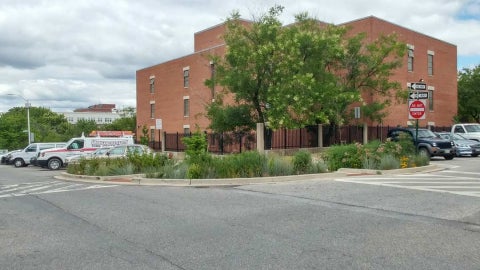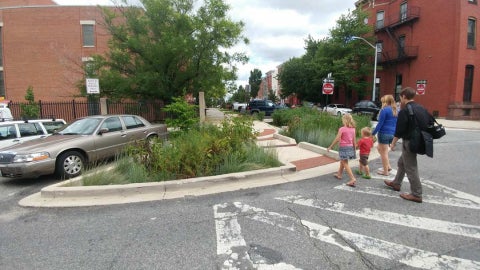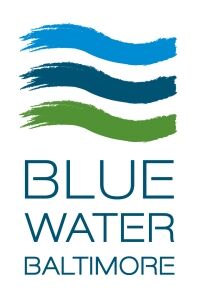Baltimore Blue Neighborhoods & Alleys

Parts of the Chesapeake Bay watershed contain a high percentage of impervious cover – paved or other hard surfaces such as roofs and roadways that prevent rain water from being absorbed into the ground. Instead, water runs along these surfaces, collecting trash and substances such as motor oil, lawn fertilizers, and pesticides. This polluted stormwater flows into streams and rivers, where it threatens aquatic ecosystems and public health. Effective stormwater management, on the other hand, creates safe paths for polluted runoff to be captured and filtered through the ground before it reaches waterways. This helps keep the environment clean and our communities healthy!

Project location: Baltimore, MD
Problem: In Baltimore’s urban, impervious downtown, high volumes of polluted stormwater had nowhere to go but into Inner Harbor.
Solution: A group of partners worked together to retrofit several urban streets and alleys in two Baltimore City neighborhoods. Retrofits included installation of permeable pavers, stormwater bumpouts (vegetated curb extensions), rain barrels, and other green infrastructure elements. The result has been cleaner, greener neighborhoods and a program that is a model for urban stormwater management. The Baltimore Blue Neighborhoods & Alleys collaboration includes monitoring to determine which types of retrofits are most effective in terms of cost and performance in ultra-urban environments. Before-and-after monitoring will track runoff reductions and progress toward complying with Baltimore’s National Pollutant Discharge Elimination System (NPDES) and the Municipal Separate Storm Sewer System (MS4) permits.
Funding sources: Baltimore Departments of Transportation and Public Works ($300,000); EPA’s Innovative Nutrient and Sediment Reduction grant program via the National Fish and Wildlife Foundation ($600,000)
Partners: Biohabitats Inc.; Blue Water Baltimore; Center for Watershed Protection






